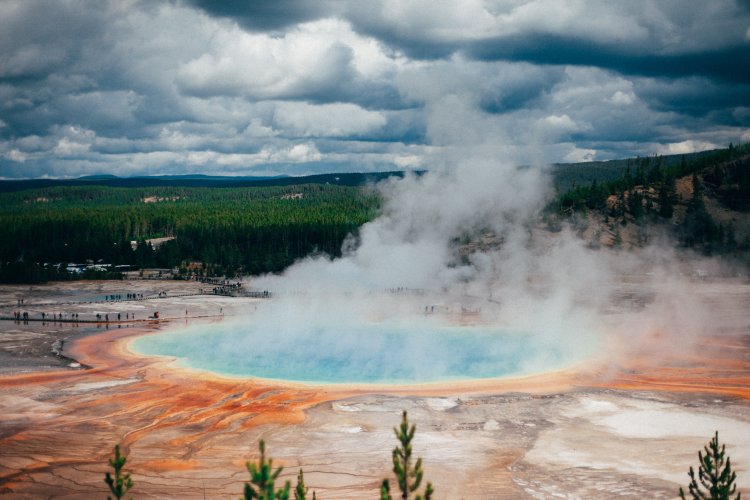On April 14, employees of the Kronotsky Nature Reserve discovered the first geyser, later called “Pervenets,” in Kamchatka. This is how the famous Valley of Geysers was discovered.
The discovery of the Valley of Geysers has gone down in history as a landmark geographical event. In April 1941, thanks to Tatyana Ustinova, a geologist and member of the Kronotsky Nature Reserve, the world became aware of the existence of a geyser, which was later called “Pervenets.” And a few months later, in July of the same year, researchers Tatyana Ustinova and Anisifor Krupenin discovered many pulsating springs, mud pots, geysers, and other hydrothermal manifestations. They are surrounded by colorful algae and other bright vegetation. Due to the high contrast of natural conditions this area has an abnormally high biodiversity.
The ecosystem of the Valley of Geysers is very fragile, so it is being carefully preserved. Ever since it was discovered, the Kamchatka miracle has become a tourist attraction. And in the 1970s, a movie titled Sannikov Land was shot here. Later, due to an increase in the number of visitors, the reserve was closed. It was not until 1993, when the necessary infrastructure was created, that it resumed its work. Now the number of visitors, the time, and the routes are all under strict control. And not only because of the threat of the spread of coronavirus infection.
“Pervenets” in history
The Valley of Geysers was discovered 7 years after the Kronotsky Nature Reserve was founded. The tectonic gorge of the Geyser River is hidden deep behind the massifs of Kikhpinych volcano. Local lore says the natives used to live on the Kronotsky bay shore, but due to the activity of the fire-breathing mountain they never came close to the Valley of Geysers.
Throughout the history of Kamchatka exploration, there have been many explorers who studied volcanic and hydrothermal activity on the territory of the modern Kronotsky Nature Reserve. The expedition led by the Russian naturalist Academician Vladimir Komarov in 1909 was the closest one. However, he failed to enter the gorge – the weather hindered to do so. One of the expedition members was Vsevolod Savich, a student, who discovered what is now called the Upper Geyser Springs of the Valley of Geysers in an unknown deep gorge during his ascent to the highest point of Kikhpinych volcano.
But the discovery, which is rightfully considered one of the greatest geographical discoveries of the 20th century, was made by two employees of the Kronotsky Nature Reserve.
On April 14, explorers Tatyana Ustinova and Anisifor Krupenin moved along the bed of the Shumnaya River. Then they reached an unknown warm river and stopped to take a rest right on the snow. Suddenly, a stream of boiling hot water hit them from the opposite shore. It was the first geyser, that's why it was called “Pervenets.”
From Tatyana Ustinova's recollections:
“We sat down on the snow to take a rest and eat what we had taken with us. Suddenly, a stream of boiling hot water, accompanied by puffs of steam and an underground rumbling sound, hit from the opposite shore out of a small hovering platform. We were terribly frightened, huddled together, and sat there not knowing what to expect. The behavior of volcanoes is unpredictable... Suddenly, the boiling water eruption stopped, the puffs of steam continued for a while, and then everything fell silent. That's when I came to my senses and shouted not in my own voice: “Geyser!!!"
And in the summer, scientists discovered a deep canyon with pulsating boiling springs and geysers buried in dense vegetation. The place was called the Valley of Geysers, each of them was named according to its “behavior.” For example, “Giant” spews boiling water to the height of a nine-story house – thirty tons of water in a minute. “Triple” got its name because it spews water from three orifices at the same time. “Sugar” geyser spouts small, sparkling in the sun streams. And “Grotto” has been dormant for years, but one day it will wake up and drop dozens of tons of turbid water into the river from the slope.
Photo on the homepage and on the page: James Fitzgerald / Photo bank Unsplash






















